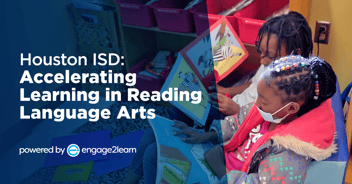The Beginner’s Guide to Effective Student & Parent Communication During COVID-19 | engage2learn
During my recent engage2learn coaching sessions, my coachees told me that since Covid-19, there had been an exponential increase in the communication flow between students, parents, teachers, and administrators. As part of our eGrowe coaching conversation, we collaborated to identify options to manage this new normal. The reality is that according to Kathleen Minke, the executive director of the National Association of School Psychologists: “Teachers want to be available to their students, to clarify their questions and calm their fears. But it’s also crucial that teachers set time aside for themselves, and that schools and districts respect—and even help create—these boundaries.”
The challenges of our new reality require districts to design a comprehensive plan to effectively and efficiently manage communications between teachers, parents and students. No doubt, our educators are in need of support because Round-the-Clock Communication Is Exhausting Teachers.
This blog offers tips to help administrators and educators develop a plan to effectively and efficiently communicate with parents and students.
Step 1: Planning for Success!
Don’t Start From Scratch!
Review district policy, school guidelines, available paid/free resources, and tools. Network with colleagues and peers. Why reinvent the wheel?
Gather Data
Do you know what mode of communication (i.e., email, text message, Facebook, etc.) works best for your stakeholders? If you don’t know or are unsure: ASK! A quick survey, as well as impromptu conversations, can provide valuable data. Check out this resource to choose the survey tool that works best for you.
Include ALL Voices
Invite all stakeholders to help develop your school’s communication plan during Covid and beyond. Give multiple, diverse, and inclusive platforms to hear all voices! Remember that people support what they help create.
Set Up Clear Parameters
Jot down non-negotiables, expectations, communication methods, timelines, etc. Don’t leave obvious things to chance. Be thorough! Remember, the devil is in the details.
Build Strong Partnerships Between Home/School
Because phone conversations feel more personal, communicating with parents and students via phone provides limitless opportunities to build authentic connections. You will not only be maintaining positive, supportive relationships with them but will also be strengthening the home-school relationship, and that is a win-win for everyone!
Personalized Interactions:
Humanize communications (emails and/or phone calls) by sharing something personal about you, a class story, a student’s anecdote, special events, or outreach programs. Use humor when appropriate. Remember that humor really is our saving grace, and it helps keep us psychologically healthy.
Mutual Civility and Respect
Ensuring effective and efficient school-home communication is everyone’s responsibility. Be clear about expecting and maintaining respectful, proactive, purposeful communication between all stakeholders. Plan ahead! Determine how your teachers will handle contentious conversations with parents or students? What expectations do you have of teachers when dealing with a difficult conversation? What training, resources, or support will you offer before problems arise?
If you struggle with how to get the conversation started, check out this FREE resource: Parent/Guardian Conversation Starters that Increase Engagement
No Plan is Ever Final
Iterate your plan as needed based on data, feedback, and changes. A plan is as good as the outcomes it produces. Establish systems to seek feedback and gather data on a regular basis. How would you promptly and widely communicate changes made to your communication plan?
Step 2: Managing Communication: Emails & Phone Calls
Set up Routines to Manage Communication
Set up routines and schedules for checking and responding to emails and phone calls. Is the expectation to respond to emails between 24-48 hours? Will teachers be expected to do so in the morning and afternoon or during their conference period? Establishing these parameters can help safeguard teachers’ personal time and will create clarity and uniformity.
Consistency is Key!
Ensure consistency of actions and timelines. Breaking protocols and routines can cause confusion and skew expectations parents and students may have about communication parameters. Stick to your plan while always anticipating emergencies or exceptions! During these unprecedented and ever-changing times, it’s a good idea to remain flexible because rigidity may not work in your favor.
Maximize Available Technology Tools
Set up voice mails and automatic email replies to better manage the flow of communication. The examples shown below came from some of my engage2learn coachees. Want more information about setting up automated email replies? Then, check out this DIY video or your email system “Help” section.
Email and Phone Considerations and Protocol Exemplars
Automatic Email Reply – Sample #1
“I appreciate your communication. You have reached me outside my office hours, which are Monday – Friday 7:45am – 3:30pm. I will get back to you as soon as possible during my office hours. Thank you for understanding.”
Automatic Email Reply – Sample #2
“Thank you for your email. I will respond as soon as possible. I can also be reached at (000)000-0000 during the following hours: xxxx. “
Automatic Email Reply – Sample #3
“I look forward to responding to your email within 24-48 hours. I am currently busy providing our students with high-quality instructional experiences. I truly appreciate your understanding.”
Classroom Phones Considerations
- Do all teachers have school phones in their classrooms?
- Will teachers be expected to answer their phones at all times?
- How will student and/or parent confidentiality be maintained?
- Can ring volumes be adjusted?
- Do classroom phones have voicemail capabilities?
- Are calls screened before they are forwarded to the classroom?
Personal Phone Usage Considerations
- What are the district policy and school expectations regarding teachers using their personal phones, even if classroom phones are available? Is this a personal choice for every teacher? Help teachers to carefully consider all options available.
- If permitted, and if teachers decide to use their personal cell phones, what kind of technology can be used to mask personal cell numbers? This easy to follow DIY video shows how to do it.
- Check district-approved communication software, like Remind, Edmodo, ClassDojo.
- Re-evaluate your plan and determine if additional training or support is needed.
Pro-Tips to Manage Phone Conversations
- Document every student and parent contact using your preferred system, i.e., Excel or Spreadsheets, Word or Doc, hardcopy communication log, or any other software designed for this purpose. Whatever you decide to use, make sure it is user-friendly.
- Keep phone conversations brief, friendly, and to the point.
- Design and follow an agenda (see the example shown below).
Sample Agenda for Phone Conversation:
- Greetings and introductions – make the conversation personable and friendly
- State the purpose of the call and time available
- Briefly discuss the matter at hand and allow enough time for the parent or the student to discuss it, too. Listen attentively, but keep the conversation focused on the topic that prompted the call.
- Communicate and agree on next steps and timeline for a potential follow-up
- Schedule the next appointment, if requested and/or needed, and send a calendar invite using your chosen calendar or LMS system
- Share the best way to reach you, whether by email, phone, text, LMS, instant messages, etc.
- Regardless of the conversation, always end the conversation on a positive note and thank the parent or student for their time, support, and effort.
Effective and Efficient Communication Matters!
With so many free and paid web apps available, schools can send immediate notifications to parents. Schools can also tailor communication content quickly. As a result, parents and students have access to information at their fingertips. Keeping the lines of communication open is a necessity and a responsibility all stakeholders share.
Keep in mind that communicating with students and parents is as much about communicating issues, concerns, and important matters as it is about building connections and relationships. Extend grace when possible while also maintaining high expectations for all.
It is my hope that as we navigate these unprecedented times, one of the resulting new normals in our school communities beyond Covid-19 will be stronger parent-teacher relationships and improved communication among all stakeholders. Through it all, we can learn much from each other by forging new ways of thinking about how to best meet our shared goals of nurturing every student’s socio-emotional well-being, academic potential, and life-ready skills.
No doubt that parent-teacher relationships are already becoming stronger and more collaborative, and that is worth all the extra effort! “Together may we give our children the roots to grow and the wings to fly.” (Anonymous)



